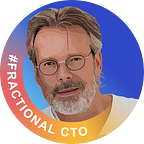The alienation of Jack & Joel, or when founders fall into their own trap
Part three of a series about the real complexity in Software Development: People..
See part I: John — or Being Held Hostage by Your Early Days Tech Lead & part II: Jane — or When Your Genius Developer has Behavioral Issues and is Bullied by the Team.
Here’s a new entry in the series about the true complexity in software development: people.
It’s one of the main pitfalls of early startups. The first employees are given a stake, because of the loyalty it generates, and promoted without much thought
Introduction
Meet Jack and Joel, who were the first recruits of a startup that is a spin-off of a successful consultancy in Finance that spotted a niche that could be a new category in B2B SaaS.
Bob, the CEO of the consultancy and founder of the startup, moves one of his most senior consultants, Joel, over to the spin-off, and makes him the Product Manager and minority shareholder.
Joel has a friend named Jack, a software engineer, and the startup team quickly grows to three shareholders.
Since neither Bob nor Joel are technical, they’re not really doing any major assessment on Jack’s technical skills, as long as he’s able to build a web application.
Everybody happy.
A small MVP comes to life after a year, and the first clients are onboarded.
So far, so good.
The founder being a well known International Finance domain expert, the startup has little trouble getting a good round of seed funding.
Scaling the team
This is when a team gets hired: a few senior developers with SaaS experience come in, and with that, Joel is promoted to COO, and Jack to CTO.
📸 Freeze frame. This is where things go mildly wrong.
As the newly recruited developers get into the actual code, they start raising red flags about the software Jack wrote.
They soon find out that Jack’s solution isn’t a good foundation to continue on. It fulfilled its role for demos and small early adopters, but it’s simply too monolithic. It lacks modularity, scalability and extensibility.
For instance, it doesn’t have a proper separation of concerns, such as a separated data layer. Instead, the app features extremely tightly coupled SQL querying across the board.
This becomes even more apparent when, due to a sponsored Cloud contract with Microsoft Azure, the team decides to move the data out to a managed cloud instance of SQL Server.
The chattiness of the app’s database access results in a disastrous performance, due to the (small) latency between app and DB server getting multiplied!
A classic example of cloud migration gone wrong.
Breaking the news
Now comes the tricky part.
How to tell the CTO?
They don’t.
They avoid the confrontation. They tell the Product Manager.
Who tells the CEO…
📸 Freeze frame again. this is where things get out of hand.
Instead of addressing the actual issue and trying to come up with a solution in open communication, the founder/CEO decides to assign one of the new recruits as the Lead Developer, and let him start a new SaaS setup that will ultimately replace the MVP code altogether.
All this, without being transparent about it to the CTO!
As strange as this all sounds, it goes on for months, and eventually leads to Jack and Joel getting alienated, as the toxicity grows.
From Jack’s perspective, Joel gets closer and closer to the CEO, who’s never been Jack’s closest friend, and is distancing himself from his former friend, sometimes ridiculing him to stress his ‘bond’ with the CEO.
Eventually, nothing Jack says in board meetings is taken seriously anymore.
Eventually, this leads to escalations, because Jack gets more and more frustrated, and the CEO removes Jack from the board, demoting him to IT Manager, tasking him with onboarding, documentation and other internal IT tasks.
Deeply hurt by this turn of affairs, a few days later, Jack calls in sick, claiming to suffer from a burn-out.
With the country’s legislation, this means Jack can’t be fired for at least two years.
📸 Freeze frame one last time. This is where the sh*t has hit the fan.
Conclusion
It’s all too easy to create a toxic environment: just start withholding information to groups of people, saying it’s better for them not to know certain things, or you don’t want to disturb them because they would lose their focus.
Or to avoid confrontation.
The only thing that helps in this regard is a radically open and honest culture, starting at the top.
Because culture trickles down top-down through the organization, and gains weight through copycat behavior.
